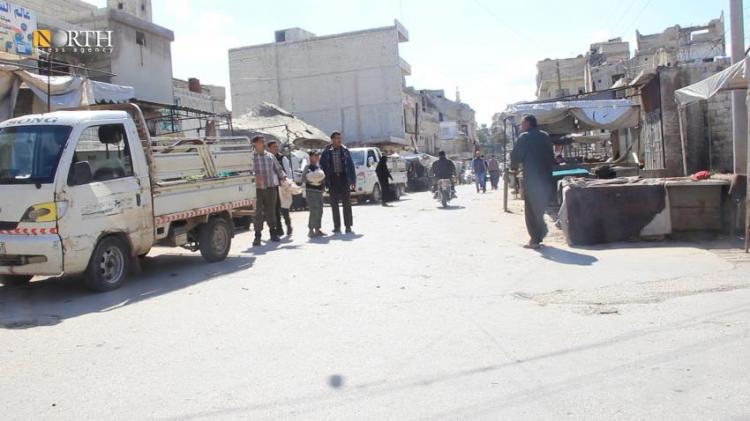Idlib IDPs returning to their cities and towns tell stories of suffering in border areas
Idlib – North-Press Agency
Large numbers of IDPs are returning to their villages and towns in the western countryside of Aleppo and the areas of Arihah and Jabal al-Zawiya south of Idlib, northwestern Syria, despite breaches of the ceasefire agreement between Moscow and Ankara.
Hussein Salat, a 38-year-old from the town of Binnish northeast of the city of Idlib, told North-Press that he was forced to flee with most of the residents of the area and head to border areas far from clashes and shelling, after intensive air strikes by government forces last February.
Nevertheless, Salat was forced to return because of the lack of adequate shelter for his family, noting that "the average rental price in Binnish ranged between 15,000 and 20,000 Syrian pounds, while the rent for the worst house in the border areas was $100."
Mohiuddin Ahmad, 40, who is also a resident of Binnish, said that 90% of the residents of his city fled to the unknown, but returned to their homes days after the ceasefire, and Binnish in turn hosted new IDPs who came recently from the border areas.
In the 5th of March, Russia and Turkey reached a ceasefire agreement in Idlib, which included conducting joint patrols and the establishment of a security corridor on both sides on the M4 highway.
Mahmoud al-Ali, 35, from the Arihah area south of Idlib, said: “We were displaced towards the border areas, but we did not find merciful people there, rather, they exploited our conditions. They were asking for high rental prices, the matter that made us return home despite the lack of basic living services."
Ahmad Dalla, a doctor from Jabal al-Zawiya, said that he and his family returned to the Arihah area despite not knowing the truth about the agreement and what is going on behind the scenes.
"We ended up like thousands of people who were displaced to areas where the intense bombing was less than others, so we had to live in an unprepared house."
According to the documentation of "The Response Coordinators" team, about 109,000 people have returned to their cities and towns in the de-escalation zone since the ceasefire came into effect.
On April 13th, a statement issued by the team indicated that the previous numbers of returnees come from more than a million people, and is equivalent to only 10.54% of the total number of the IDPs.

